Unconventional Field Development
Workflow to manage the operational challenges in an unconventional field development requires full field simulation.

Workflow to manage the operational challenges in an unconventional field development requires full field simulation.

May 11 2024
Workflow to manage the operational challenges in an unconventional field development requires full field simulation.

The dynamic nature of unconventional field development strategies involves a sequence of depletions, each with distinct production durations, and refracturing techniques. In each phase new wells are drilled along with an addition of refracturing existing parent wells. The presence of parent wells adds the challenge of producing new wells in depleted pressure zones and the uncertainty of oil production from re-stimulated wells.
The simulation workflow involves multiple steps using geomechanical and fracture modeling tools along with subsurface flow simulation to assess the impact of refracturing existing wells and completing new wells in the presence of depletion. The computational effort and simulation runtime has a significant impact on project turnaround time.
Initially, the fracture process involved the use of sliding sleeves on the parent wells. However, during the refracturing process, fractures tend to propagate further in the depleted areas due to decreased pressure. Consequently, this may lead to the formation of notably tall or exceptionally long fractures in those regions, resulting in significant interaction with fractures in the adjacent well. This configuration makes numerical simulation difficult.
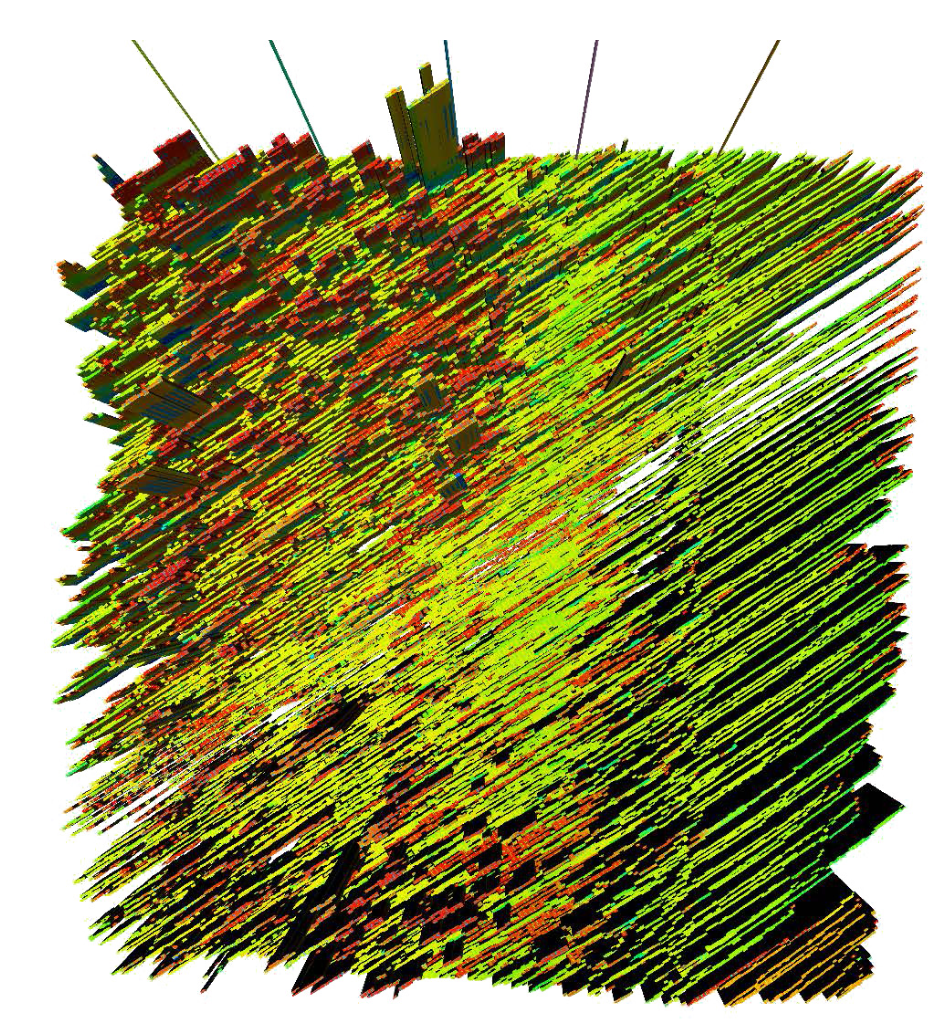
A comprehensive simulation workflow is required to optimize production strategies and operational decisions. The tools being used are geomechanics and fracture modeling as well as full field reservoir simulation. This workflow is shown below.
The geomechanical tool is used to provide the main stress field data which will be used in the fracture modeling tool to get the initial hydraulic fracture geometry. The generated fractures are mapped into a simulation grid that feeds into ECHELON to run the full field reservoir simulation for the parent well depletion phase.
This type of model usually consists of multiple wells and millions of grid cells that historically have made these simulations prohibitive. However, ECHELON’s capability and performance allows us to run these models and provides field scale pressure and saturation at the end of depletion that is used in the parent refracturing phase. In this phase, the geomechanical tool re-evaluates the stress field by using the depleted pressure from ECHELON, and a fracture modeling tool determines the new refrac geometry based on the updated stress field. ECHELON performs a second phase simulation using the new fractures to assess their impact on production.
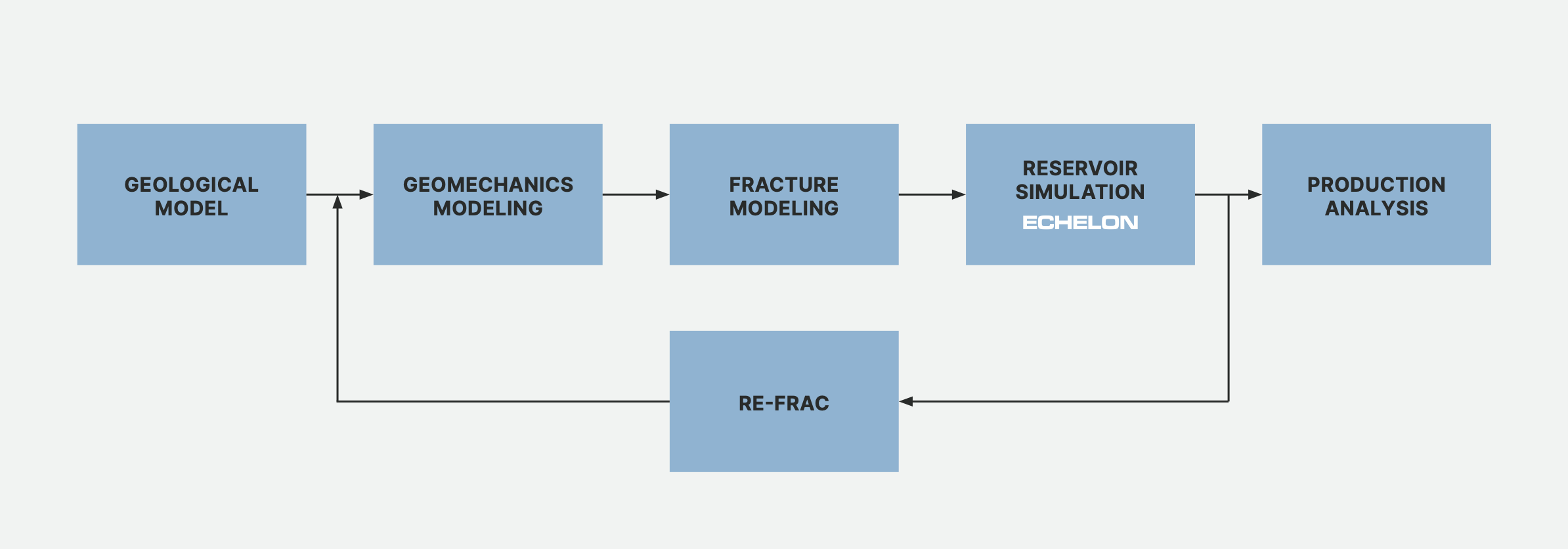
ECHELON plays a pivotal role in this simulation workflow by efficiently handling full field simulations of multiple wells with complex fracture geometries within a dual porosity medium. ECHELON’s capability to fit in the current workflow along with a geomechanical and fracture modeling tool leads to a thorough fracture model which incorporates data from multiple disciplines. Moreover, the speed and performance of ECHELON results in significant productivity gains, allowing engineers to run multiple economic scenarios and compare options efficiently. Ultimately the efficiency allows for shorter turnaround times to make informed decisions in the fast-paced unconventional development environment.
To the right is an illustration of the remarkable scalability achieved in ECHELON running this model. In this particular case, the simulation was executed seamlessly across multiple GPUs, handling a staggering 8.6 million active cells dual porosity black oil model with daily production history. It is noteworthy that the simulation was completed in minutes as opposed to historically taking many hours to days.
Thank you to Marathon Oil for allowing us to share the information in this Case Study.
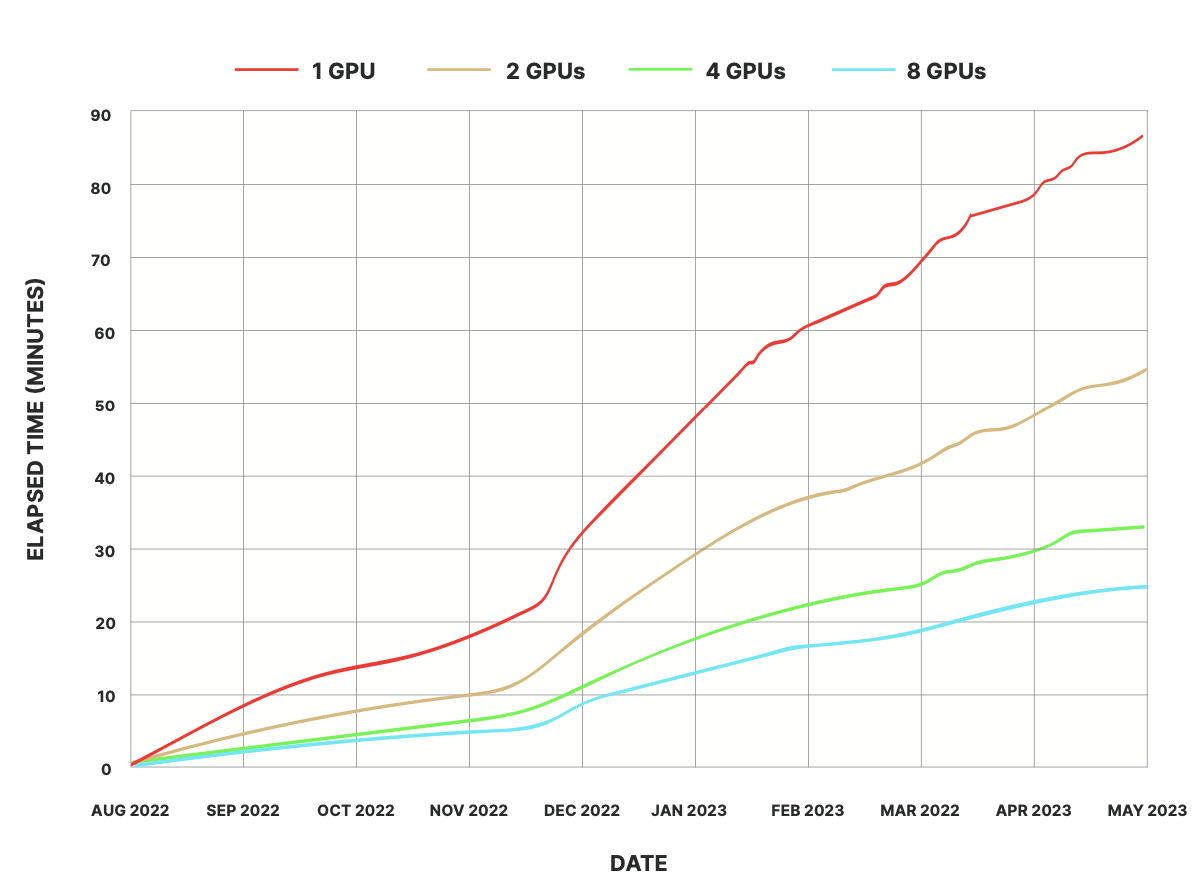
Deep dive into our software product and its efficacy.
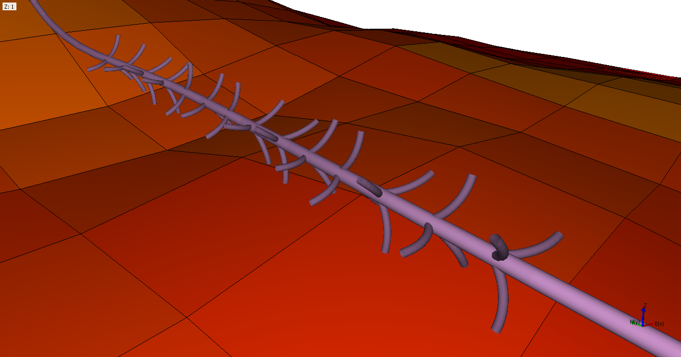
Evaluating the productivity enhancements of Fishbones in fractured carbonate reservoirs using high-performance cloud-based reservoir simulation.
View case study →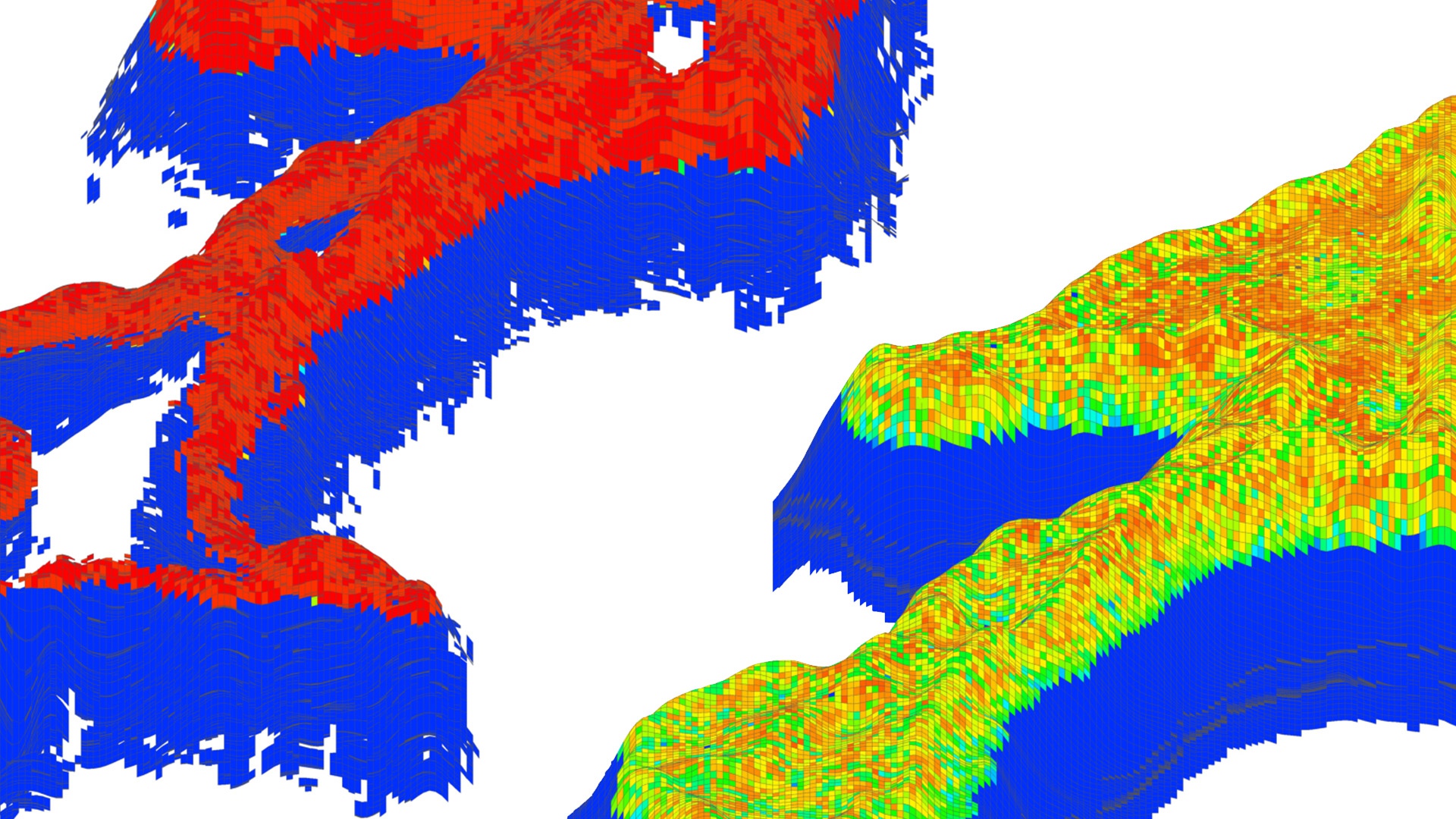
ECHELON software tackles an extremely difficult compositional model. A demonstration of the robustness of ECHELON software.
View case study →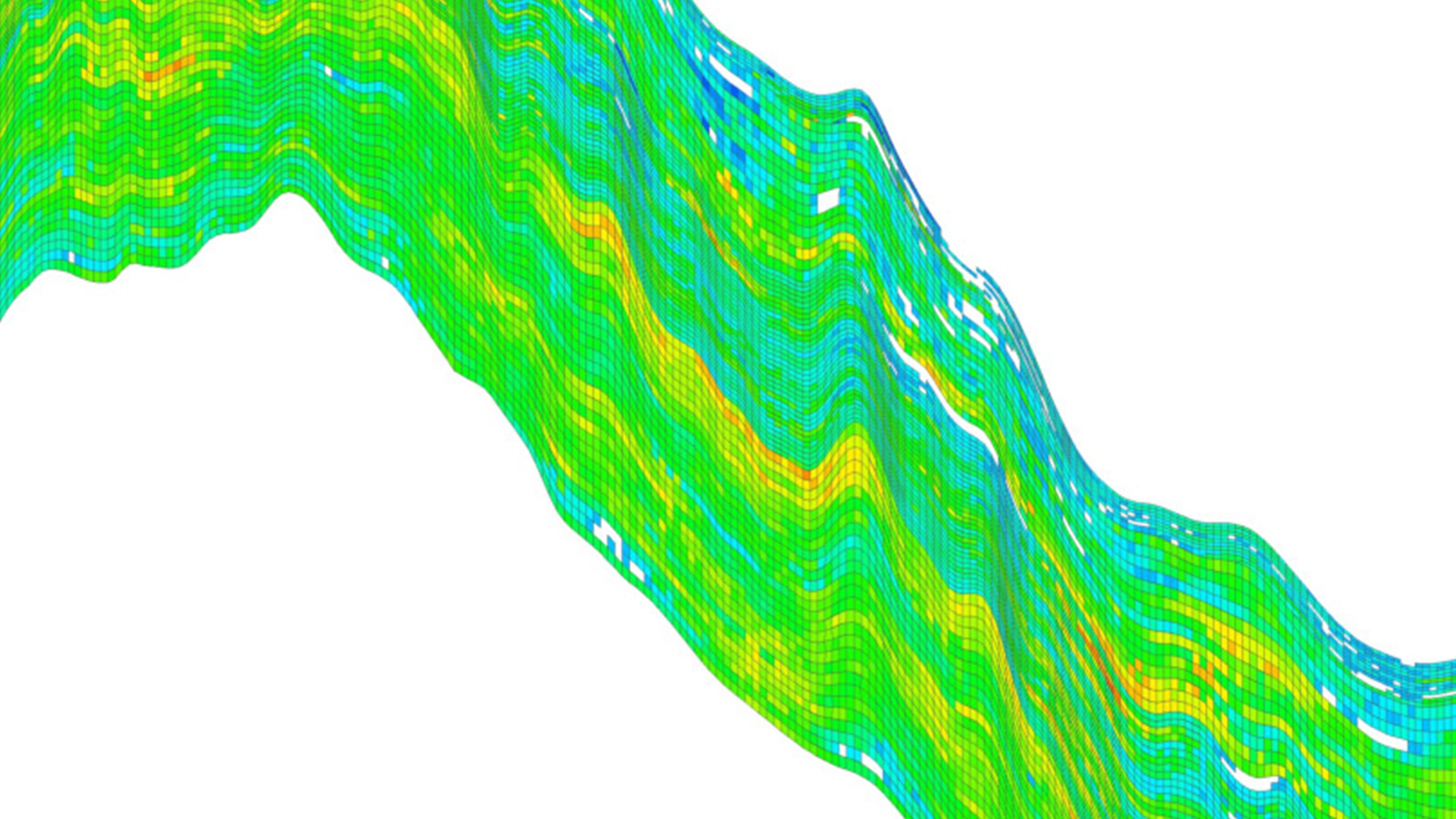
Learn more about ECHELON's scalability test for this giant field model in the Middle East.
View case study →